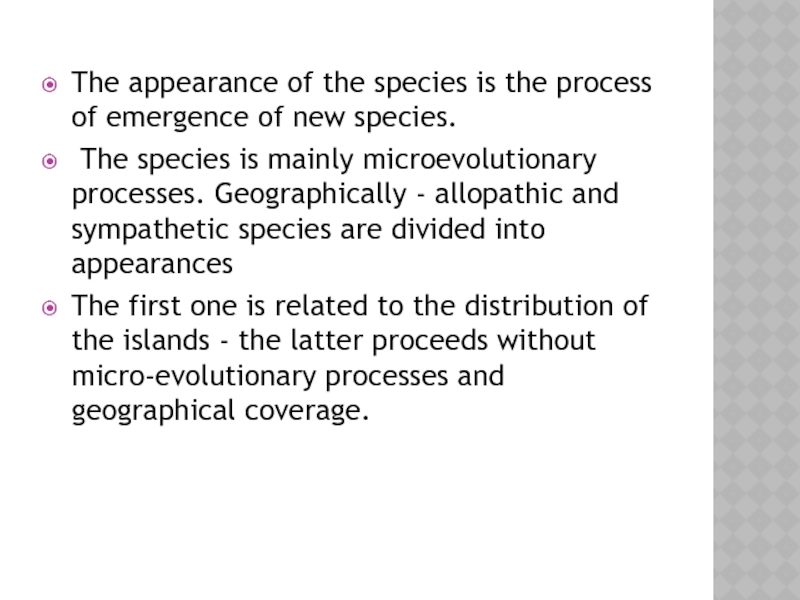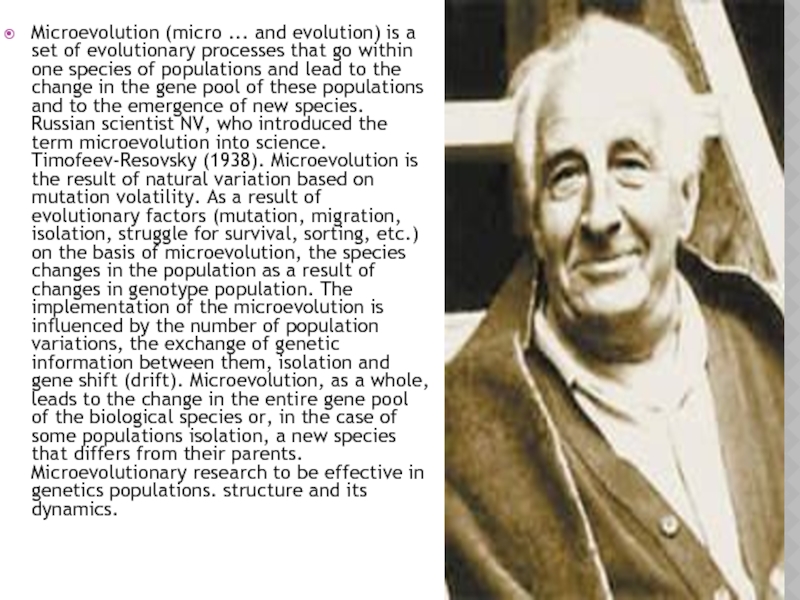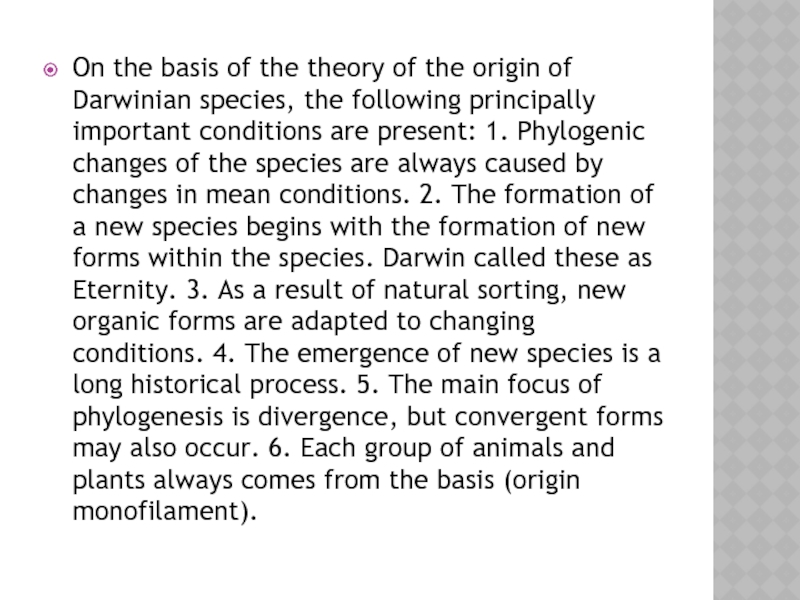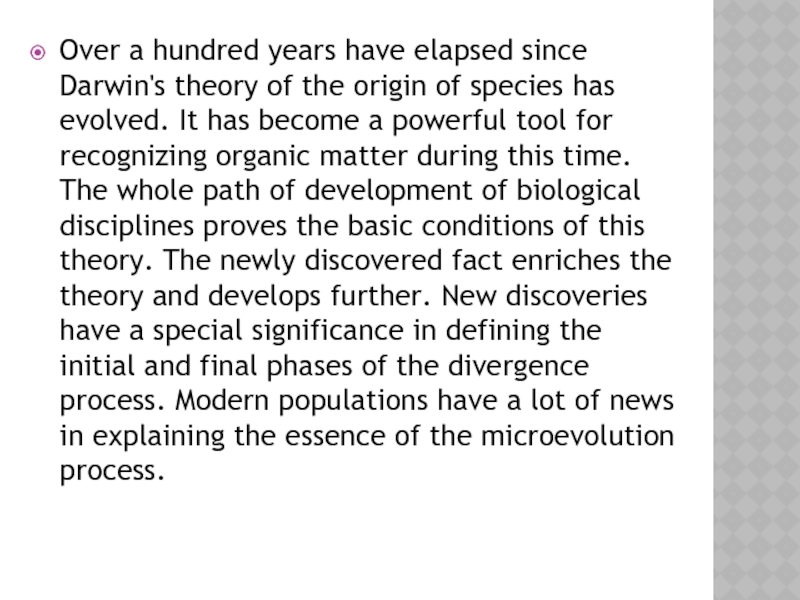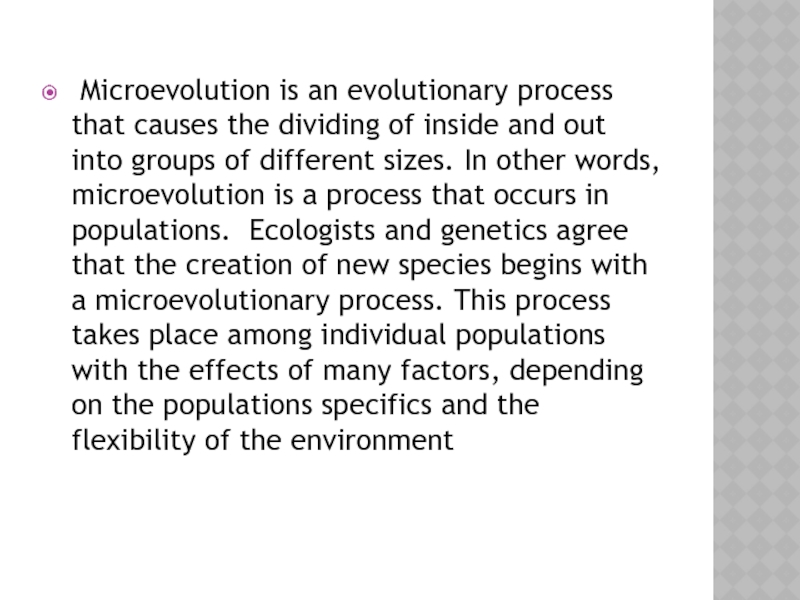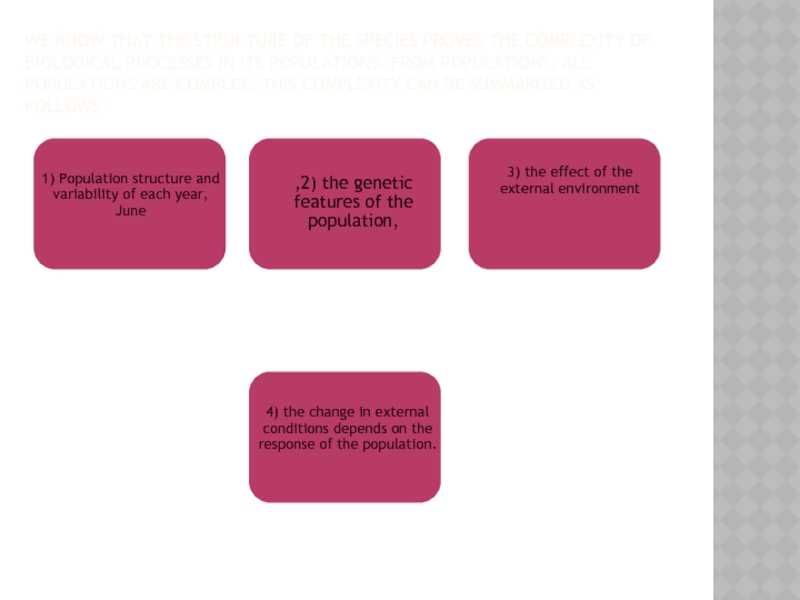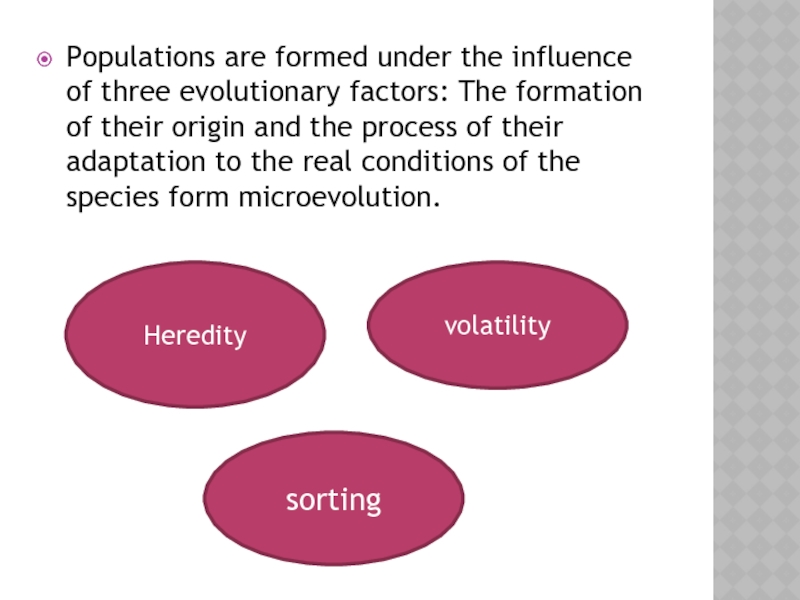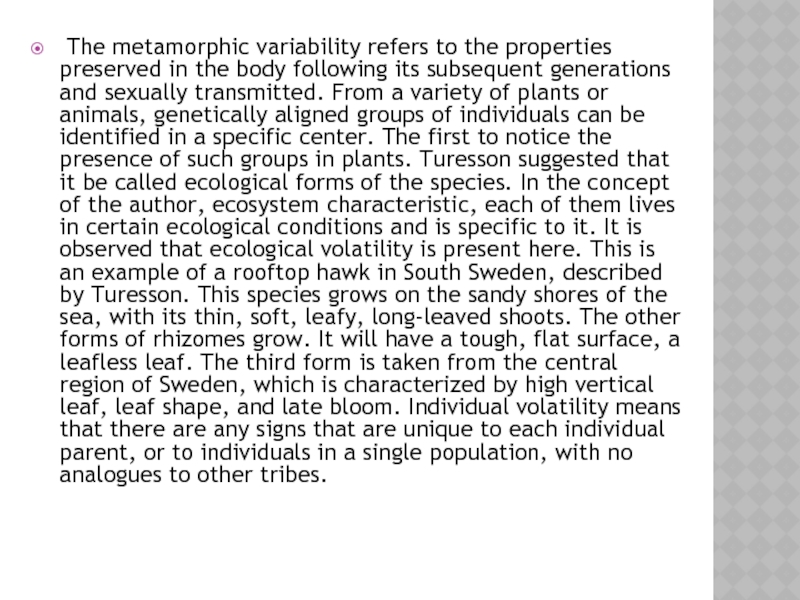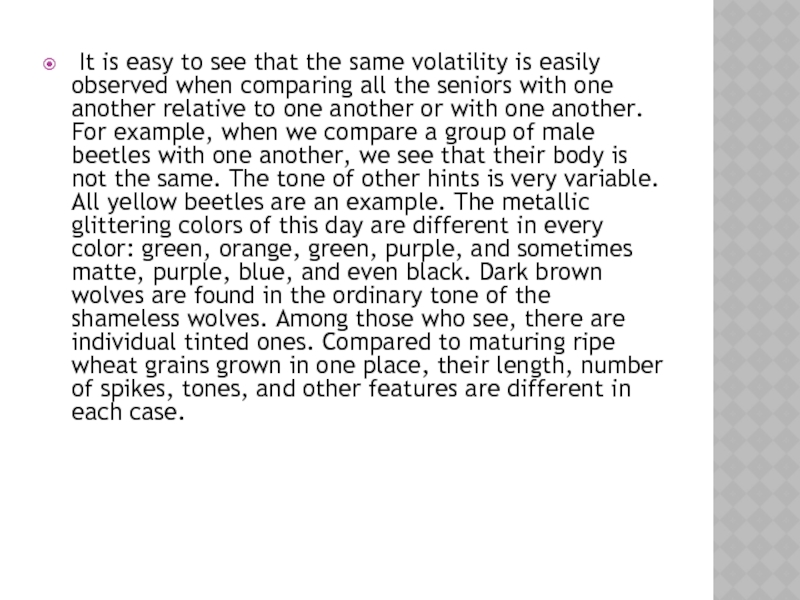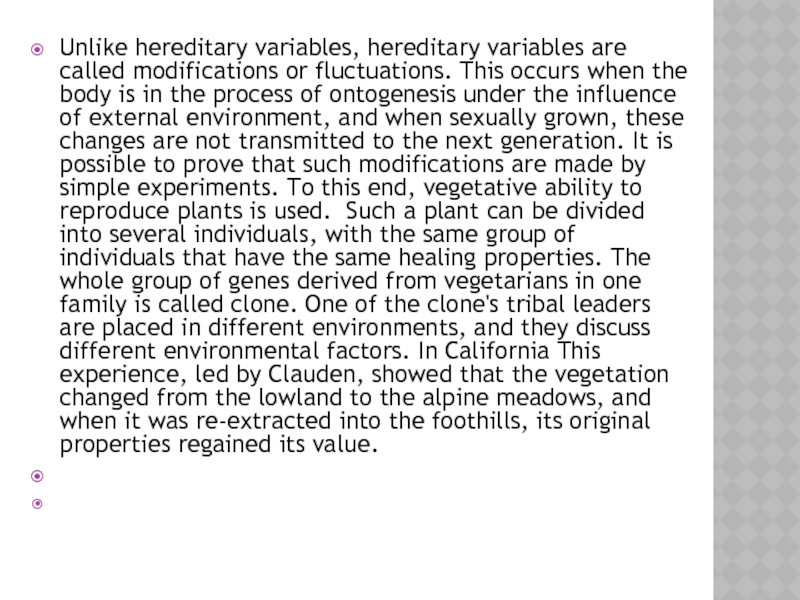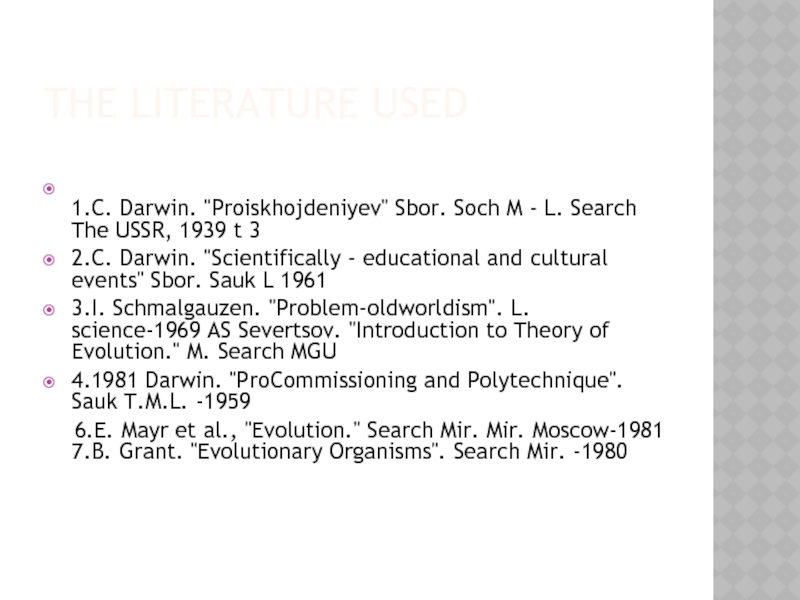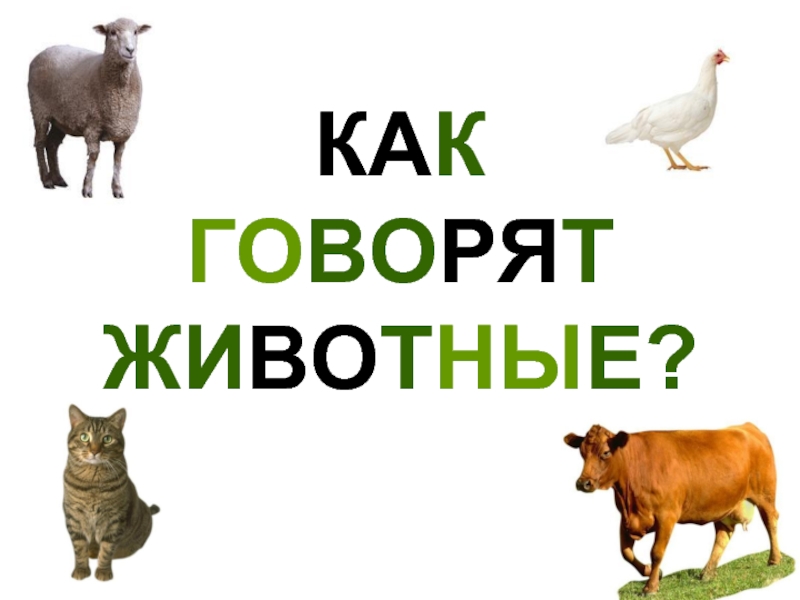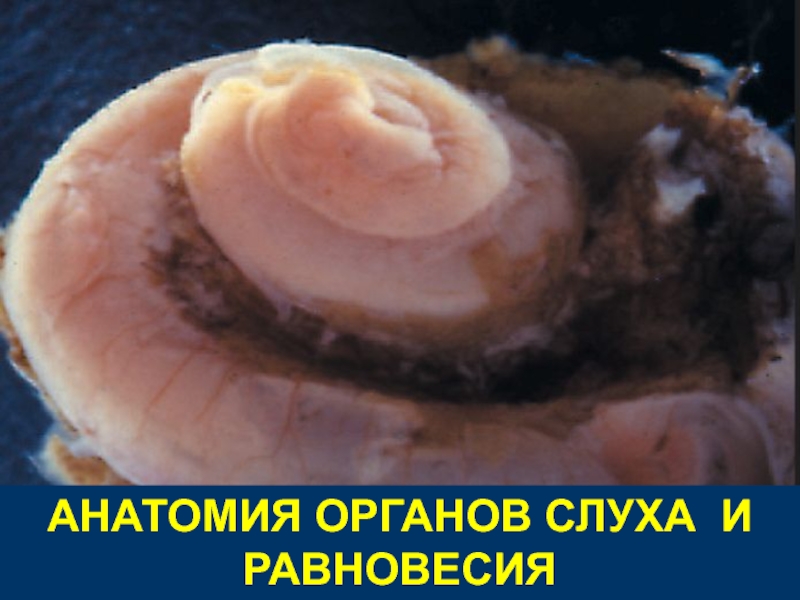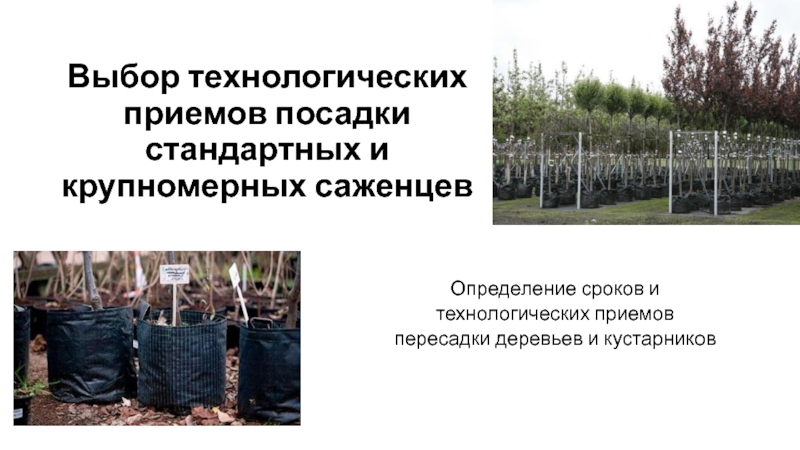- Главная
- Разное
- Дизайн
- Бизнес и предпринимательство
- Аналитика
- Образование
- Развлечения
- Красота и здоровье
- Финансы
- Государство
- Путешествия
- Спорт
- Недвижимость
- Армия
- Графика
- Культурология
- Еда и кулинария
- Лингвистика
- Английский язык
- Астрономия
- Алгебра
- Биология
- География
- Детские презентации
- Информатика
- История
- Литература
- Маркетинг
- Математика
- Медицина
- Менеджмент
- Музыка
- МХК
- Немецкий язык
- ОБЖ
- Обществознание
- Окружающий мир
- Педагогика
- Русский язык
- Технология
- Физика
- Философия
- Химия
- Шаблоны, картинки для презентаций
- Экология
- Экономика
- Юриспруденция
Microevolutionary doctrine презентация
Содержание
- 1. Microevolutionary doctrine
- 2. The appearance of the species is the
- 3. Microevolution (micro ... and evolution) is a
- 4. On the basis of the theory of
- 5. Over a hundred years have elapsed since
- 6. Microevolution is an evolutionary process that causes
- 7. WE KNOW THAT THE STRUCTURE OF THE
- 8. Populations are formed under the influence of
- 9. The metamorphic variability refers to the
- 10. It is easy to see that the
- 11. Unlike hereditary variables, hereditary variables are called
- 12. THE LITERATURE USED 1.C. Darwin.
Слайд 2The appearance of the species is the process of emergence of
new species.
The species is mainly microevolutionary processes. Geographically - allopathic and sympathetic species are divided into appearances
The first one is related to the distribution of the islands - the latter proceeds without micro-evolutionary processes and geographical coverage.
The species is mainly microevolutionary processes. Geographically - allopathic and sympathetic species are divided into appearances
The first one is related to the distribution of the islands - the latter proceeds without micro-evolutionary processes and geographical coverage.
Слайд 3Microevolution (micro ... and evolution) is a set of evolutionary processes
that go within one species of populations and lead to the change in the gene pool of these populations and to the emergence of new species. Russian scientist NV, who introduced the term microevolution into science. Timofeev-Resovsky (1938). Microevolution is the result of natural variation based on mutation volatility. As a result of evolutionary factors (mutation, migration, isolation, struggle for survival, sorting, etc.) on the basis of microevolution, the species changes in the population as a result of changes in genotype population. The implementation of the microevolution is influenced by the number of population variations, the exchange of genetic information between them, isolation and gene shift (drift). Microevolution, as a whole, leads to the change in the entire gene pool of the biological species or, in the case of some populations isolation, a new species that differs from their parents. Microevolutionary research to be effective in genetics populations. structure and its dynamics.
Слайд 4On the basis of the theory of the origin of Darwinian
species, the following principally important conditions are present: 1. Phylogenic changes of the species are always caused by changes in mean conditions. 2. The formation of a new species begins with the formation of new forms within the species. Darwin called these as Eternity. 3. As a result of natural sorting, new organic forms are adapted to changing conditions. 4. The emergence of new species is a long historical process. 5. The main focus of phylogenesis is divergence, but convergent forms may also occur. 6. Each group of animals and plants always comes from the basis (origin monofilament).
Слайд 5Over a hundred years have elapsed since Darwin's theory of the
origin of species has evolved. It has become a powerful tool for recognizing organic matter during this time. The whole path of development of biological disciplines proves the basic conditions of this theory. The newly discovered fact enriches the theory and develops further. New discoveries have a special significance in defining the initial and final phases of the divergence process. Modern populations have a lot of news in explaining the essence of the microevolution process.
Слайд 6 Microevolution is an evolutionary process that causes the dividing of inside
and out into groups of different sizes. In other words, microevolution is a process that occurs in populations. Ecologists and genetics agree that the creation of new species begins with a microevolutionary process. This process takes place among individual populations with the effects of many factors, depending on the populations specifics and the flexibility of the environment
Слайд 7WE KNOW THAT THE STRUCTURE OF THE SPECIES PROVES THE COMPLEXITY
OF BIOLOGICAL PROCESSES IN ITS POPULATIONS. FROM POPULATIONS, ALL POPULATIONS ARE COMPLEX. THIS COMPLEXITY CAN BE SUMMARIZED AS FOLLOWS:
Слайд 8Populations are formed under the influence of three evolutionary factors: The
formation of their origin and the process of their adaptation to the real conditions of the species form microevolution.
Heredity
volatility
sorting
Слайд 9 The metamorphic variability refers to the properties preserved in the
body following its subsequent generations and sexually transmitted. From a variety of plants or animals, genetically aligned groups of individuals can be identified in a specific center. The first to notice the presence of such groups in plants. Turesson suggested that it be called ecological forms of the species. In the concept of the author, ecosystem characteristic, each of them lives in certain ecological conditions and is specific to it. It is observed that ecological volatility is present here. This is an example of a rooftop hawk in South Sweden, described by Turesson. This species grows on the sandy shores of the sea, with its thin, soft, leafy, long-leaved shoots. The other forms of rhizomes grow. It will have a tough, flat surface, a leafless leaf. The third form is taken from the central region of Sweden, which is characterized by high vertical leaf, leaf shape, and late bloom. Individual volatility means that there are any signs that are unique to each individual parent, or to individuals in a single population, with no analogues to other tribes.
Слайд 10 It is easy to see that the same volatility is easily
observed when comparing all the seniors with one another relative to one another or with one another. For example, when we compare a group of male beetles with one another, we see that their body is not the same. The tone of other hints is very variable. All yellow beetles are an example. The metallic glittering colors of this day are different in every color: green, orange, green, purple, and sometimes matte, purple, blue, and even black. Dark brown wolves are found in the ordinary tone of the shameless wolves. Among those who see, there are individual tinted ones. Compared to maturing ripe wheat grains grown in one place, their length, number of spikes, tones, and other features are different in each case.
Слайд 11Unlike hereditary variables, hereditary variables are called modifications or fluctuations. This
occurs when the body is in the process of ontogenesis under the influence of external environment, and when sexually grown, these changes are not transmitted to the next generation. It is possible to prove that such modifications are made by simple experiments. To this end, vegetative ability to reproduce plants is used. Such a plant can be divided into several individuals, with the same group of individuals that have the same healing properties. The whole group of genes derived from vegetarians in one family is called clone. One of the clone's tribal leaders are placed in different environments, and they discuss different environmental factors. In California This experience, led by Clauden, showed that the vegetation changed from the lowland to the alpine meadows, and when it was re-extracted into the foothills, its original properties regained its value.
Слайд 12THE LITERATURE USED
1.C. Darwin. "Proiskhojdeniyev" Sbor. Soch M - L. Search
The USSR, 1939 t 3
2.C. Darwin. "Scientifically - educational and cultural events" Sbor. Sauk L 1961
3.I. Schmalgauzen. "Problem-oldworldism". L. science-1969 AS Severtsov. "Introduction to Theory of Evolution." M. Search MGU
4.1981 Darwin. "ProCommissioning and Polytechnique". Sauk T.M.L. -1959
6.E. Mayr et al., "Evolution." Search Mir. Mir. Moscow-1981 7.B. Grant. "Evolutionary Organisms". Search Mir. -1980
2.C. Darwin. "Scientifically - educational and cultural events" Sbor. Sauk L 1961
3.I. Schmalgauzen. "Problem-oldworldism". L. science-1969 AS Severtsov. "Introduction to Theory of Evolution." M. Search MGU
4.1981 Darwin. "ProCommissioning and Polytechnique". Sauk T.M.L. -1959
6.E. Mayr et al., "Evolution." Search Mir. Mir. Moscow-1981 7.B. Grant. "Evolutionary Organisms". Search Mir. -1980

